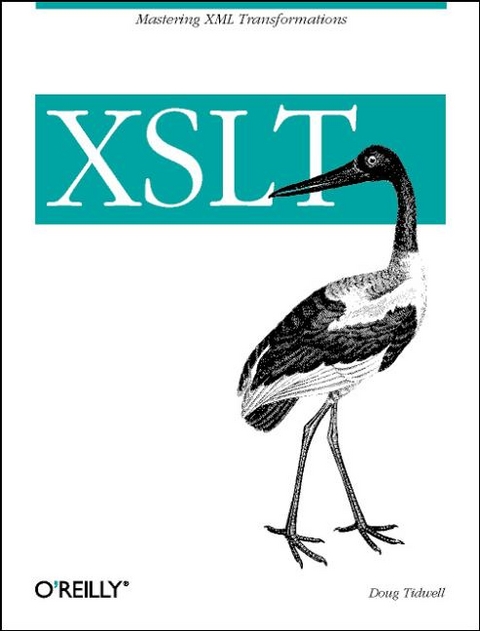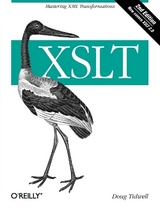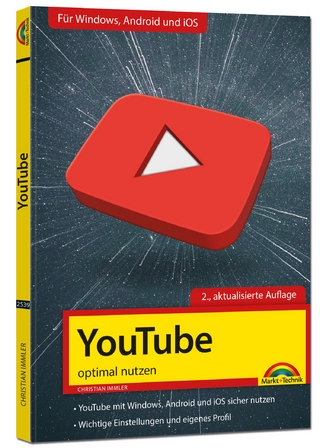
XSLT
O'Reilly Media (Verlag)
978-0-596-00053-0 (ISBN)
- Titel erscheint in neuer Auflage
- Artikel merken
XSLT documents a core technology for processing XML. Originally created for page layout, XSLT (Extensible Stylesheet Transformations) is now much more: a general-purpose translation tool, a system for reorganizing document content, and a way to generate multiple results - such as HTML, WAP, and SVG - from the same content. "XSLT" covers XSLT and XPath, a critical companion standard, and addresses topics ranging from basic transformations to complex sorting and linking. It explores extension functions on a variety of different XSLT processors and shows ways to combine multiple documents using XSLT. Code examples add a real-world dimension to each technique. Useful as XSLT is, its peculiar characteristics make it difficult to get started in, and the ability to use advanced techniques depends on a clear and exact understanding of how XSLT templates work and interact. For instance, the understanding of "variables" in XSLT is deeply different from the understanding of "variables" in procedural languages. The author explains XSLT by building from the basics to its more complex and powerful possibilities.
Doug Tidwell is a senior programmer at IBM. He has more than a sixth of a century of programming experience, and has been working with markup languages for more than a decade. He was a speaker at the first XML conference in 1997, and has taught XML classes around the world. His job as a Cyber Evangelist is to look busy and to help people use new technologies to solve problems. Using a pair of zircon-encrusted tweezers, he holds a master's degree in computer science from Vanderbilt University and a bachelor's degree in English from the University of Georgia. He lives in Raleigh, North Carolina, with his wife, cooking teacher Sheri Castle (see her web site at http://www.sheri-inc.com) and their daughter Lily.
Preface Chapter 1. Getting Started The Design of XSLT XML Basics Installing Xalan Summary Chapter 2. The Obligatory Hello World Example Goals of This Chapter Transforming Hello World How a Stylesheet Is Processed Stylesheet Structure Sample Gallery Summary Chapter 3. XPath: A Syntax for Describing Needles and Haystacks The XPath Data Model Location Paths Attribute Value Templates XPath Datatypes The XPath View of an XML Document Summary Chapter 4. Branching and Control Elements Goals of This Chapter Branching Elements of XSLT Invoking Templates by Name Parameters Variables Using Recursion to Do Most Anything A Stylesheet That Emulates a for Loop A Stylesheet That Generates a Stylesheet That Emulates a for Loop Summary Chapter 5. Creating Links and Cross-References Generating Links with the id() Function Generating Links with the key() Function Generating Links in Unstructured Documents Summary Chapter 6. Sorting and Grouping Elements Sorting Data with Grouping Nodes Summary Chapter 7. Combining XML Documents Overview The document() Function Invoking the document() Function More Sophisticated Techniques Summary Capter 8. Extending XSLT Extension Elements, Extension Functions, and Fallback Processing Extending the Saxon Processor More Examples Summary Chapter 9. Case Study: The Toot-O-Matic About the Toot-O-Matic Design Goals Tutorial Layout XML Document Design XSLT Source Code Summary Appendix A. XSLT Reference Appendix B. XPath Reference Appendix C. XSLT and XPath Function Reference Appendix D. XSLT Guide Glossary Index
| Erscheint lt. Verlag | 2.10.2001 |
|---|---|
| Zusatzinfo | glossary, index |
| Verlagsort | Sebastopol |
| Sprache | englisch |
| Maße | 178 x 234 mm |
| Gewicht | 760 g |
| Einbandart | kartoniert |
| Themenwelt | Mathematik / Informatik ► Informatik ► Web / Internet |
| ISBN-10 | 0-596-00053-7 / 0596000537 |
| ISBN-13 | 978-0-596-00053-0 / 9780596000530 |
| Zustand | Neuware |
| Haben Sie eine Frage zum Produkt? |
aus dem Bereich



